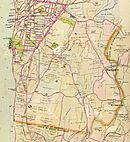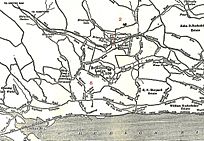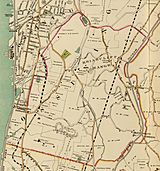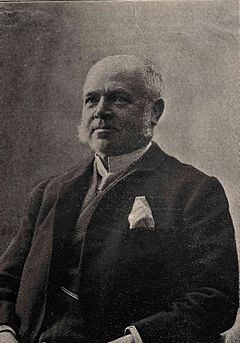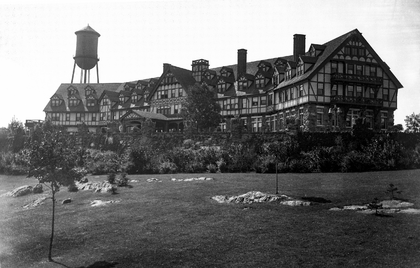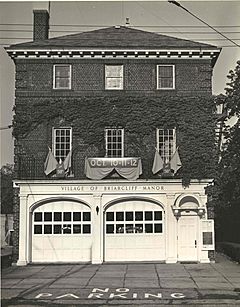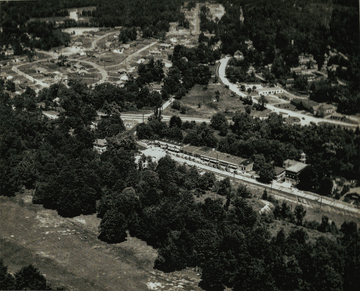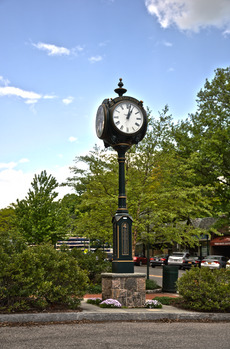History of Briarcliff Manor facts for kids
The history of Briarcliff Manor tells the story of a village in Westchester County, New York. It started as a small settlement between the Hudson and Pocantico Rivers in the 1800s. People have lived in the area now called Briarcliff Manor for a very long time, even since the Archaic period (thousands of years ago). But the area really started to grow during the Industrial Revolution. The village officially became a village in 1902, covering one square mile. It has grown bigger mainly by adding nearby areas, like Scarborough in 1906 and parts of Mount Pleasant in 1927.
Some of the first leaders of the village government included William de Nyse Nichols (1902-1905), Walter W. Law, Jr. (1905-1918), Henry H. Law (1918-1936), and J. Henry Ingham (1936-1941).
Contents
Early Life in Briarcliff Manor
People have lived in the Briarcliff Manor area since ancient times. Archaeologists found old oyster shells, stone tools, and slings from the Archaic period (8000 to 1000 BC). Before Europeans arrived, the area was home to the Sint Sincks (or "Sing Sings") tribe. They were a group of Wappinger Native Americans. They spoke a language called Munsee and called themselves Lenape, meaning "the People."
Land Ownership and Early Settlements
In 1680, a man named Frederick Philipse bought the Ossining area from an Indian leader named Ghoharius. This included the area that later became Scarborough. In 1685, Philipse bought a huge amount of land, about 156,000 acres, stretching along the Hudson River. This land was called Philipsburg Manor.
During the American Revolutionary War, the Philipse family lost their land because they supported the British. The area stayed mostly empty until after the war. In 1693, fewer than twenty families lived in the large area that included Briarcliff Manor.
The area became known as Whitson's Corners. This was named after three brothers, John H., Richard, and Reuben Whitson, who owned farms there. In 1865, the first schoolhouse was built on land given by John Whitson. It was also used as a church. In 1880, a train station called Whitson's Corners was added to the train line. A post office opened a year later, and it was renamed the Briarcliff Manor Post Office in 1897.
How Briarcliff Manor Grew

After he stopped working as a vice president at W. & J. Sloane, Walter Law moved to the area that is now Briarcliff Manor. In 1890, he bought his first 236 acres. He quickly bought more land, and by 1900, he owned over 5,000 acres in Westchester County. This made him the biggest individual landowner there.
In the 1890s, Walter Law started Briarcliff Farms. This was a huge farm with many Jersey dairy cows. At its busiest, the farm had 500 workers taking care of over 1,000 cows, 500 pigs, 4,000 chickens, and other animals. He also started the Briarcliff Table Water Company and the Briarcliff Greenhouses. The farm was one of the first in the U.S. to produce "certified milk," which was very clean and safe. The greenhouses shipped thousands of roses every day, mostly to New York City.
Law helped build up the village. He created schools, churches, parks, and the Briarcliff Lodge. In 1900, he started the School of Practical Agriculture. By 1902, he had invested $2.5 million in the village. Many of his farm workers moved into the village. New York State required a certain number of people per square mile for an area to become a village. On November 21, 1902, Briarcliff Manor officially became a village. At that time, Walter Law owned almost all of the land in the village and employed 100 of its residents.
The Briarcliff Lodge opened in 1902 as a top resort hotel. Famous guests, like Franklin and Eleanor Roosevelt, stayed there. The hotel became less popular in the 1930s. The original Lodge building burned down in 2003.
In 1903, Mrs. Dow's School for Girls started at the Briarcliff Lodge. Walter Law later gave Mary Elizabeth Dow 35 acres and built Dow Hall for the school. This school later became Briarcliff College. Also in 1903, the Briarcliff Manor Fire Department was created. Their first fire engine was white, which the founder thought was easier to see at night than red, since there were no street lights yet. Briarcliff Manor's fire engines are still white today!
In 1904, the first electric street lights were put in. In 1906, Scarborough became part of Briarcliff Manor. Walter Law focused on developing the village as a community after 1907.
Exciting Events and New Buildings
In 1908, Briarcliff Manor hosted the First American International Road Race. Over 300,000 people came to watch this big car race! The race was held again in 1934 and 1935. Also in 1908, the village police department was started.
The Briarcliff Community Center, known as "The Club," opened in 1910. It was a place for social events, dances, and had a gym and library. It closed in 1927, and the building burned down in 1928. Sleepy Hollow Country Club was founded in Scarborough in 1911. The Village Municipal Building was built in 1913 and opened in 1914. This building now holds several businesses. In 1914, the Briarcliff Community Center started the library that became the Briarcliff Manor Public Library.
Briarcliff Manor During World War I
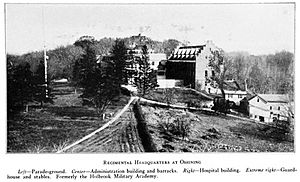
During World War I, 91 people from Briarcliff Manor served in the United States Armed Forces. The village helped in other ways too. A military regiment was sent to guard the Croton Aqueduct, which supplied water. A resident named V. Everit Macy let them use the former Holbrook Military Academy campus for their headquarters. The school's main building was even used as a hospital. Many local residents, including Walter Law, helped support the soldiers.
Briarcliff Manor in Modern Times
Walter Law passed away in 1924. In 1925, V. Everit Macy gave 265 acres of land to the Girl Scouts of the USA. This land later became the Edith Macy Conference Center. The high school opened in 1928.
World War II and Beyond
During World War II, over 340 of the village's 1,830 residents served in the military. Eight streets in the village are named after residents who died in the war. Many firefighters also left to fight, so the village asked for volunteers aged 16-18 to join the fire department. After the war, a special dinner was held for the returning veterans.
About 30 people from Briarcliff Manor served in the Korean War. John Kelvin Koelsch, who lived in Scarborough, died in a Korean prison camp. In 1952, Briarcliff Manor celebrated its 50th anniversary. A new neighborhood called Crossroads, with 84 houses, was finished that year. In 1953, Todd Elementary School opened.
The Putnam Division train line stopped running in 1958. The village library then moved into the old train station building. The village's first corporate building opened in 1960. In 1964, the new Village Hall opened. The current high school opened in 1971. The Briarcliff Manor-Scarborough Historical Society was founded in 1974. Pace University bought Briarcliff College in 1977. Also in 1977, the village celebrated its 75th anniversary with events like a race of old cars.
The Scarborough School closed in 1978. In 1980, the Chilmark Club became part of the village's Parks and Recreation Department. Rotary International started a local group in 1981. The old grade-school building was taken down in 1996, and senior housing was built there. In the Vietnam War, at least five men from the village served. In 1998, the high school auditorium opened. In 1999, a bridge on Beech Hill Road was destroyed by the rising Pocantico River during Hurricane Floyd.
Recent History and Changes
The village celebrated its 100th anniversary in 2002 with many events. In 2000, the pool house in Law Memorial Park was taken down. A new one was built, and the park was improved with new paths, lights, and a redesigned pond. Over 300 people came to the Veterans Day ceremony for the park. In 2007, construction began on a large addition to the Briarcliff Manor Public Library. It opened in 2009.
In 2002, a company tried an experimental internet system in Briarcliff Manor using power lines. This system caused problems for amateur radio operators and is no longer used. A Jewish community center, Chabad Lubavitch of Briarcliff Manor & Ossining, was started around 2004. From 2008 to 2012, Briarcliff Manor had a weekly indoor farmers' market. In 2011, after Hurricane Irene, a large sinkhole formed on North State Road.
From 2011 to 2015, the village discussed adding parts of the town of Ossining to Briarcliff Manor. Some residents wanted this change, but Ossining's board rejected the idea. Briarcliff Manor tried to appeal this decision but later decided to stop.
In 2015, Chabad Lubavitch bought a building in Ossining to be its first permanent synagogue. In June 2015, Saint Mary's Episcopal Church announced it would close after 175 years. A new community center was planned for the village. The part of the Briarcliff Manor Public Library building that used to be the library was renovated to become this community center, opening in 2016. In December 2015, the Law Park pavilion was damaged in a large fire. It was rebuilt and reopened in 2017, keeping its original style.


